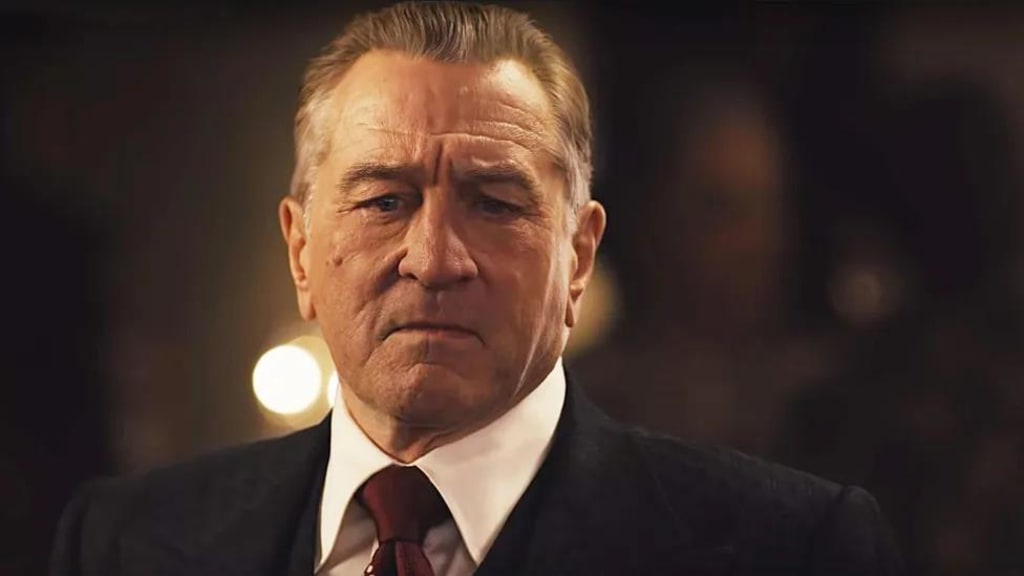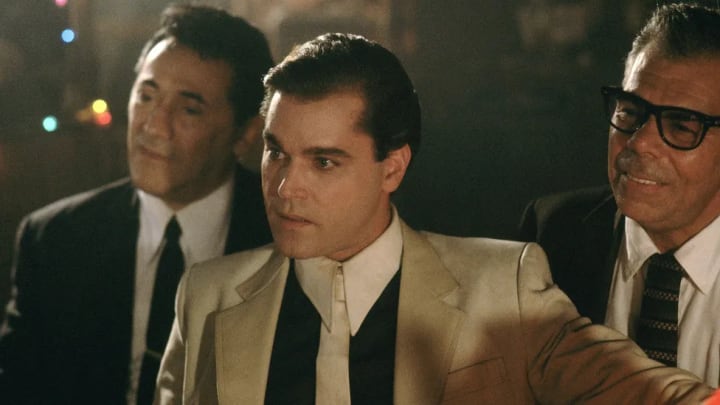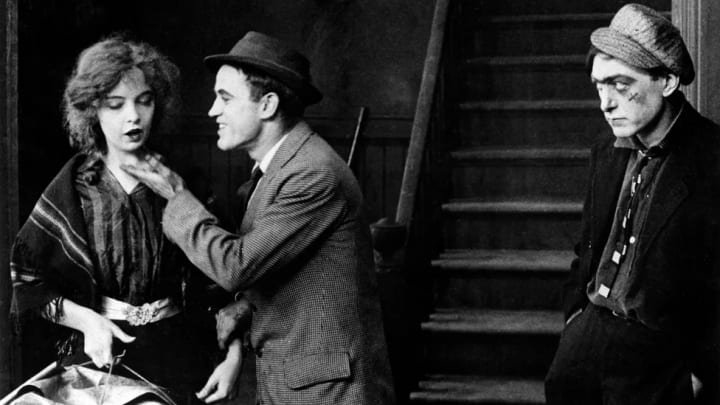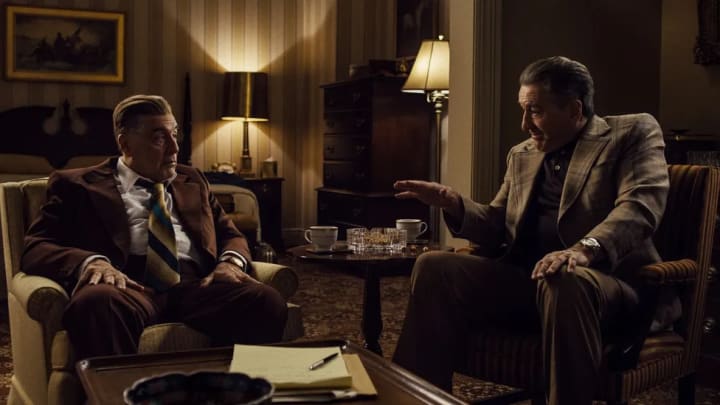Is The Irishman the end of the gangster movie as we know it?
Martin Scorsese’s latest crime epic is a moving film in its own right – but it also serves as a beautiful swansong for an entire genre of 20th Century cinema

or Martin Scorsese – a filmmaker whose work has so often been characterised by a rollicking, nervous vitality – The Irishman is as sedate a gangster movie as they come. His glacial three-and-a-half-hour epic sprawls to cover the Kennedy assassination and the creeping corruption of the American labour movement, and all within a loose framework that brings together the great actors of the US crime-thriller genre: Robert De Niro, Harvey Keitel, Joe Pesci, and for the first time, Al Pacino.
The film is an adaptation of Charles Brandt’s memoir I Heard You Paint Houses, about the mob henchman Frank Sheeran; it spans some 60 years in the life of Sheeran and his associates, with the veteran actors playing the characters’ younger selves using much-discussed ‘de-aging technology’.
Frank (De Niro) is a blue-collar truck driver whose experience as a soldier during World War Two makes him well-suited for a pivot to icy hitman – and minder to the infamous Jimmy Hoffa (Pacino), head of the International Brotherhood of Teamsters. Joe Pesci returns to the screen in the inverse of his usual psychotic type: the quietly watchful mob power player Russell Bufalino, who first takes a liking to Frank and hires him. In the early stages of the film, there are some remarkable set pieces – none more so than that of a mob hit in a shopping mall, where the shot follows any number of passers-by, before passing the violent action and zooming in on an elaborate floral display in a storefront window. In a film concerned with the consistent de-glamorisation of mob life, Scorsese can still find poetry.
Scorsese tells the story of the insidious leak of gangsterism into the American power structure
In previous Scorsese gangster epics Goodfellas and Casino, the flashy and the vulgar were on display for the audience to luxuriate in and be repulsed by in equal measure; here there’s nothing particularly fun about the lifestyle. Equally, the bland Frank Sheeran contrasts with Goodfellas’ anti-hero Henry Hill, who since childhood has a romantic fixation with the power and glamour of mafia life. If anything, of all of Scorsese’s criminal protagonists, Frank Sheeran is the one who most casually drifts into his position; he’s just sort of there.
In spite of the unusual nature of his life’s work, he seems almost noncommittal; he just does what he does, to the extent that it seems mundane to him. In that respect, The Irishman seems like it’s put the typically supporting ‘cartoon heavy’ into the spotlight – character-wise, he’s not dynamic or exciting; he’s a cog in a larger machine. But Scorsese and De Niro use Sheeran’s void-like quality to underline the moral ugliness of what he does. He is willing to internalise any dissent he feels towards his masters, making him as effective as it does frighteningly empty.
A rebuke to his critics
As of late, it’s been a habit of more casual Scorsese fans to associate him only with his crime movies. In truth, he’s a wide-ranging artist as interested in genteel literary adaptations and in rediscovering classics of world cinema as he is in gang violence. But because of the flashiness and popularity of Goodfellas and Casino – and the ability to track those interests back to his earliest films, like Mean Streets – it’s been easy to characterise Scorsese as a mere chronicler of wise guys. In its own subtle way, The Irishman offers a rebuke to the critique that has plagued Scorsese for years – that he sympathises with or fails to condemn his amoral characters. This has been especially true since the release of The Wolf of Wall Street, which concerned itself with white-collar criminals and was pilloried in some corners for its refusal to take sides. The Irishman is far more plainly moral in the way it stands in judgement of its characters.

Here, even the most sympathetic of the players offer cautionary tales. Scorsese tells the story of the insidious leak of gangsterism into the power structure of the US. Jimmy Hoffa does not want to be owned lock stock and barrel by the Mafia – but you don’t dip a toe in when it comes to these sorts of pacts; if you make a deal with the devil, he’ll come for your soul.
The Irishman’s central characters don’t go out in a blaze of glory. Instead, they march into a desiccated, lonely retirement where everything they’ve worked for means little
For much of the 20th Century, the gangster film concerned back-alley petty criminals, no-hopers borne from the filthy tenements of the US at the turn of the century, the same immigrant-dwelling neighbourhoods that would be such fertile ground for everything from Angels with Dirty Faces straight through to The Godfather. Although in The Irishman, Frank is not from desperate urban poverty, his environment is not far removed from the tribalistic immigrant past – as hinted at by his nickname, ‘Irish’, differentiating him from the Italians he associates with. Another set of gangster films layered into De Niro’s persona are the coolly detached hitmen and career criminals of French filmmaker Jean-Pierre Melville, whose works Le Samouraï and Le Cercle Rouge would define the assassin as an amoral enigma.
The earliest US gangster movies explored organised crime as a social problem in need of solving, and in so doing could tell these stories without raising the ire of the censors. At the very least, they touched on the buying-off of politicians and cops.
However, from DW Griffith’s The Musketeers of Pig Alley onwards, they also portrayed the moral relativism of a world where hoodlums with ‘honour’ were superior to those without. Above all, that 1912 film told us, you don’t squeal. That coda was still being repeated in Goodfellas with a fresh spin: “Never rat on your friends, and always keep your mouth shut,” Hill is told by his mentor Jimmy Conway (again played by De Niro). The tension of this silence – and the risks of breaking it – are omnipresent not only in Scorsese’s work, but in most gangster movies.

But in so many ways, The Irishman undermines what came before. Although it comically remarks on the violent deaths of many supporting players, its central characters don’t go out in a blaze of glory. Instead, they march into a desiccated, lonely retirement where everything they’ve worked for means little. Beyond that, the most pointed act of betrayal in the movie is one that puts the Mafia more squarely in the role of ‘bad guys’ than maybe any other mob film Scorsese has made. Frank’s whole life becomes a parable for the absurdity of omertà and criminal ‘loyalty’; what is there left to be loyal to when all your friends are dead? How did loyalty to one group force you to betray other, deeper bonds?
Cracking the hardman exterior
Vulnerability is a trait rarely seen in the gangster movie, unless it’s in the kinds of weaklings who are usually killed off. The Godfather’s Corleones barely twitch when they order a killing; Henry Hill treats disposing of a corpse like he’s going to drop off some dry cleaning.
But in The Irishman, there are cracks in the facade. In one crucial scene, Russell (Pesci) and Frank (De Niro) sit in a car at the runway of an airport, waiting for Frank to leave to commit a terrible deed. As Russell watches Frank leave, his lip curls. It’s a blink-and-you’ll-miss it expression of anguish and regret, gone as quickly as it surfaces, and the camera does not move to highlight it. Amidst all this tough-guy bravado, it seems to me to be one of the more revealing moments in the film. Along the same lines, there’s a phone call that De Niro makes late in the film, where finally his blankness melts into something far more human. His breathless and barely coherent line delivery is almost lacerating in its sadness.
Russell and Frank live to their old age, albeit in prison. The pair must put in their dentures to eat their fresh bread and dip it into grape juice. It’s a sad mirror image of an earlier scene in the film, where the two first bond while speaking in Italian and sharing bread and red wine in the old peasant style. Late in the film, FBI agents remind an elderly Frank that his attorney is dead. “Who killed him?” he demands. “Cancer,” one responds flatly.
The idea that we will one day live in a world with no new Martin Scorsese movies to look forward to is a very sad one, and Scorsese acknowledges this here
In its third act, The Irishman explores the idea of a long life as its own kind of protracted punishment, where family becomes estranged and friends die, and where the characters are given long stretches of time to ruminate on all they’ve done. Here, there’s no James Cagney dying dramatically on church steps with a perfect final line on his lips, or Scarface with his machine-gun-toting suicide by cop. Instead, Scorsese offers his own pointed commentary on ‘not going gentle’, with the philosophical weight of a lifelong and sometimes doubtful Catholic.
But the film is also operating on a second, more self-aware level: Scorsese and De Niro are old. When I interviewed De Niro recently, he told me he doubted they’d get this cast together again in a film like this. Potentially, this represents the end of Scorsese’s dealings in the genre he’s helped define. The idea that we will one day live in a world with no new Martin Scorsese movies to look forward to is a very sad one, and he acknowledges this, partly by taking the gangster film to its most logical extension: old age and death.

The latter part of The Irishman relies on our familiarity with Robert De Niro’s deeply-etched frown, carrying with us the memory of his gangster iterations of the past, from The Godfather Part II to Once Upon a Time in America. Just as, over the better part of a century, we saw the Western mature then wane in parallel with its most popular star John Wayne, so, with the aging of De Niro and Pacino, the gangster movie is now facing its own reckoning.
Is this a goodbye?
Watching De Niro face his mortality – not through violence but through the inevitable passing of time – can’t help but be moving. When De Niro started, he was picking up the torch from the great gangster actors like James Cagney. As he has aged, we’ve seen a particular kind of cinema move from its heyday into its twilight years alongside him.
This is not to say that there aren’t still great crime movies being made, whether they’re feminist heist films like Widows or grimy 70s-inflected street flicks like Uncut Gems, the latest from up-and-coming duo the Safdie brothers. But the epic period-set organised crime drama is one type of film which may become increasingly rare, especially given the best of its creators are offering a swan song for it right in front of us.
In the final, haunting shot of The Irishman, the camera recedes from its protagonist just as life is from its characters. But Scorsese leaves the door cracked open, playing us out with the saccharine, lilting chords of The Five Satins’ In the Still of the Night. Cruelly ironic for the tormented Frank, it’s a song that will at once induce nostalgia for many viewers, and forever have added sting.
We’ve had the luck to be around to see the output of one the greatest of film artists, who has worked consistently to explore and elevate the gangster movie each time he’s tackled it. There won’t be another one like The Irishman, from Martin Scorsese or otherwise.
About the Creator
Mao Jiao Li
When you think, act like a wise man; but when you speak, act like a common man.






Comments
There are no comments for this story
Be the first to respond and start the conversation.